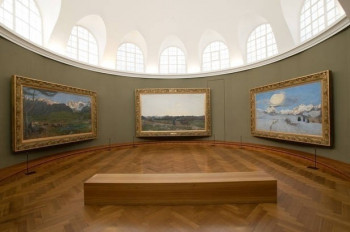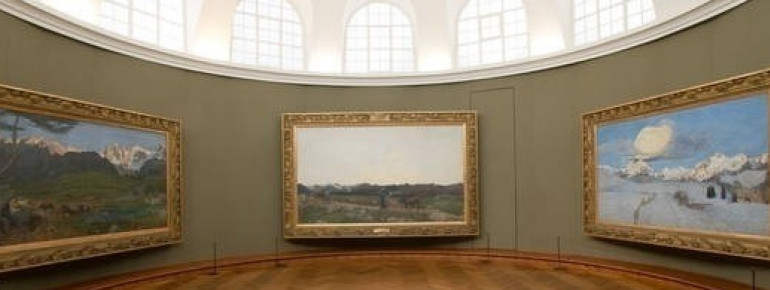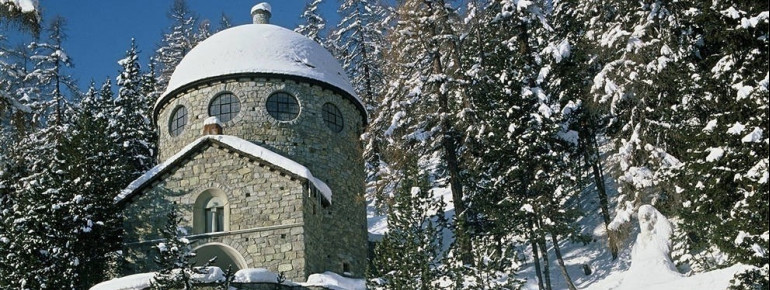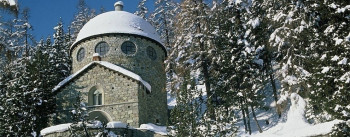Contents
Description

© Segantini Museum St. Moritz
The museum, coming across as an accessible monument for the artist, grants an insight into the life and work of Giovanni Segantini. Alongside van Gogh, Munch, Cézanne or Gauguin, Sengantini is considered a vanguard artist for the modern era. Many of his artworks depict people in harmony with the natural surroundings of Engadin high valley. This has earned him a reputation of being a renewer of Alpine painting.
Exhibition Samples
Apart from photographs depicting the artist and his family, there are almost 50 artworks from various creative periods. “Ave Maria on the Lake”, “Bündnerin at the Fountain”, “Early Mass” and “High Noon in the Alps” are the most popular oil paintings to name just a few. The detailed drawings depicting everyday situations on Schafberg mountain (“The Sheepfold”, “Storm in the Alps”) were drawn with Conté crayons and black chalk.
Alpine Triptych
The ultimate highlight of the Segantini Museum is definitely the Alpine Triptych, consisting of the paintings “La Vita – La Natura – La Morte”.
“La Vita” was painted between 1896 and 1899 and shows the view from Soglio on the Sciora mpuntain group and the Bondasca glacier in the early evening. In the foreground, families are shown with their children as well as a shepherd at work.
“La Natura” took Segantini two years of work to be finished, depicting a farmer couple driving their herds home at sunset after a long working day. The painting also shows the view from Schafberg mountain, the place Segantini died, on the surrounding mountain summits.
“La Morte” is the final painting of the triptych and was created in the period between 1896 and 1899. It depicts the apparent death of all things. At sunrise, a corpse is carried out of a house in front of a winter-white mountain landscape at the Malojapass. The originally seven paintings comprising “Alpine Symphony” remained unfinished due to Segantini early death in 1899 at the age of 41. It then became the famous Alpine Triptych.
Other Artists
The Segantini Museum also presents artworks by other artists, among which are two by Giovanni Giacometti. He drew his dead friend Segantini on his death bed. Furthermore, the museum exhibits a Segantini bust by Paolo Trubetzkoy and a marble memorial by Leonardo Bistolfi.
Historical Information
The Segantini Museum with its marvellous dome was built by the architect Nicolaus Hartmann in 1908. It was supposed to be a kind of memorial site for the famous Alpine painter who died an early death in a small mountain hut on Schafberg mountain above Pontresina in 1899.
The architecture of the museum's building was modelled on the pavilion Segantini once designed for the Parisian World Exhibition in 1900. His “Engadin Panorama” (nowadays “Alpine Triptych”) was supposed to be shown to the world there.
Interesting facts
- Segantini Museum is among the 15 best rated Tourist Attractions in Switzerland.
How to get there
By Car
Starting at the centre of St. Moritz, Segantini Museum is a mere 10 minutes walking distance away.
Fee-based car parks can be found along the Via Somplaz leading straight to the museum or you may want to leave your car in one of the parking garages in the centre.
By Train
There is a train operating from Zurich via Chur to St. Moritz. In Chur you take the “Rätische Bahn”.








